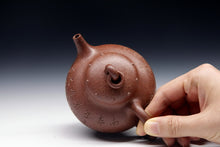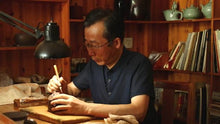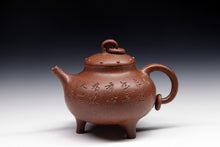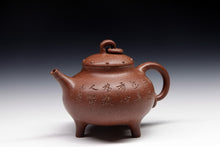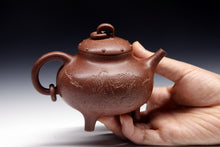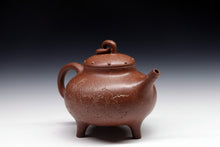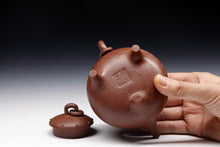
Since the development of Yixing Zisha teapots, through the inheritance and interpretation of past generations of craftsmen and famous masters, they have long since turned from a single tea-drinking appliance to exploring the pursuit of the idea and artistic beauty of the shape of the pot. It is these folk masters and masters who tirelessly pursue the beauty and thinking of the pot shape. The perfect unity of connotation has kept many classic styles that still seem to have rich ideological connotations in the continuous innovation and elimination. Today, I will share a teapot with you tea friends: (one word, nine tripod teapot) made by teacher Zhang Jian Sheng, A national-level arts and crafts artist, born in Yixing in 1966. He joined the work in 1984 and dabbled in purple sand. Because of his diligence, studious and positive attitude, he was favored by the senior arts and crafts artist Shu Fengying. Under the guidance of the runner-up, the pot-making technique has advanced by leaps and bounds. Later, he was fortunate to get the guidance of the famous potter and heir of Master Gu Jingzhou, Mr. Ge Taozhong, thus perfecting the technique of pot-making. Master Wu You Liang engraved and painted, national craft artist, Wu A good teacher grew up in the house of Zisha with a strong pottery atmosphere. He practiced painting and calligraphy since he was a child. Now he has been in the industry for more than 30 years. Especially for his exquisite pottery carving techniques, he has gradually become well-known in the Zisha industry and is recognized as the "old pot carving method". The first person", the industry insiders called "Wu Yi Dao". This teapot was made by two people.
The tripod is the representative of the Chinese bronze culture period. In ancient times, the tripod was regarded as an important tool for building a country and a symbol of the country and power. Until now, the Chinese still have a sense of worship of the tripod, and the word "ding" has also been given "prominent", "Noble", "Shengda" and other extended meanings, such as: the tripod, famous, prosperous, helping each other, etc., the tripod is also a ritual tool for making achievements. The monarchs or princes and ministers of the Zhou dynasty must cast tripods at major ceremonies or receiving rewards, and use the flags to show their achievements and record the grand occasion. The three-legged tripod pot is a sophisticated concept and evolved from the shape of a bronze vessel. The author, Zhang Jian Sheng, overcame the difficulties, took the dignified and vigorous similarities between the two as genes, and added decorations according to functional requirements, and then became this purple clay teapot, a bronze ware. For the solemn and solemn shape, the elegant and elegant purple clay pot is used to interpret it. The combination is thick, dignified, calm, and calm. As a result, the purple clay pot is a little more elegant and interesting, with a short straight mouth and ear-shaped handles, which seem to be simple. However, while interpreting the bell shape, the function of the purple clay pot is accurately reflected. Wu You Liang's sculpture: Nanshan has a leisurely mood and fragrance. On the other side, two elderly people drink tea together. The whole pot is stable and strong, and the lines are neat. Smooth, thick and solemn, showing the boldness and connotation of purple sand! The artistic conception of the work is beautiful, running through the ancient and modern, with profound meaning, and great aesthetic and collection value.












